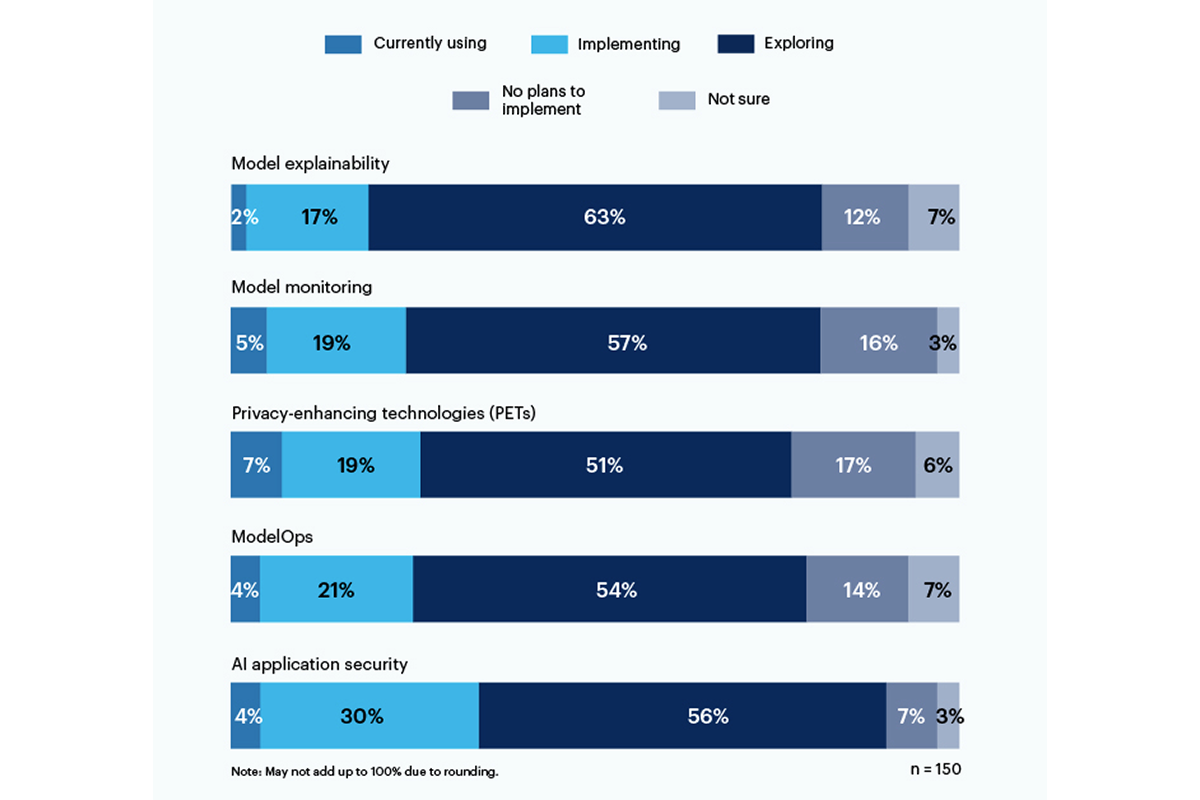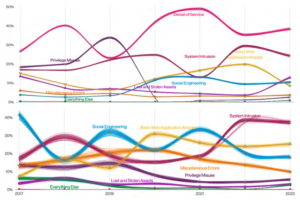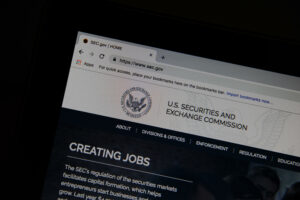
As more organizations adopt generative AI technologies — to craft pitches, complete grant applications, and write boilerplate code — security teams are realizing the need to address a new question: How do you secure AI tools?
One-third of respondents in a recent survey from Gartner reported either using or implementing AI-based application security tools to address the risks posed by the use of generative AI in their organization.
Privacy-enhancing technologies (PETs) showed the greatest current use, at 7% of respondents, with a solid 19% of companies implementing it; this category includes ways to protect personal data, such as homomorphic encryption, AI-generated synthetic data, secure multiparty computation, federated learning, and differential privacy. However, a solid 17% have no plans to impelment PETs in their environment.
Only 19% are using or implementing tools for model explainability, but there is significant interest (56%) among the respondents in exploring and understanding these tools to address generative AI risk. Explainability, model monitoring, and AI application security tools can all be used on open source or proprietary models to achieve trustworthiness and reliability enterprise users need, according to Gartner.
The risks the respondents are most concerned about include incorrect or biased outputs (58%) and vulnerabilities or leaked secrets in AI-generated code (57%). Significantly, 43% cited potential copyright or licensing issues arising from AI-generated content as top risks to their organization.
“There is still no transparency about data models are training on, so the risk associated with bias, and privacy is very difficult to understand and estimate,” a C-suite executive wrote in response to the Gartner survey.
In June, the National Institute of Standards and Technology (NIST) launched a public working group to help address that question, based on its AI Risk Management Framework from January. As the Gartner data shows, companies are not waiting for NIST directives.
- SEO Powered Content & PR Distribution. Get Amplified Today.
- PlatoData.Network Vertical Generative Ai. Empower Yourself. Access Here.
- PlatoAiStream. Web3 Intelligence. Knowledge Amplified. Access Here.
- PlatoESG. Carbon, CleanTech, Energy, Environment, Solar, Waste Management. Access Here.
- PlatoHealth. Biotech and Clinical Trials Intelligence. Access Here.
- Source: https://www.darkreading.com/tech-talks/companies-rely-multiple-methods-secure-generative-ai
- :is
- :not
- 7
- a
- About
- According
- Achieve
- address
- adopt
- AI
- All
- among
- and
- Application
- application security
- applications
- ARE
- AS
- associated
- At
- based
- BE
- bias
- biased
- but
- by
- C-suite
- CAN
- Category
- cited
- code
- Companies
- complete
- concerned
- content
- copyright
- craft
- Current
- data
- difficult
- directives
- do
- either
- Enterprise
- Environment
- estimate
- executive
- Exploring
- For
- Framework
- from
- Gartner
- generative
- Generative AI
- grant
- greatest
- Have
- help
- How
- However
- HTTPS
- implementing
- in
- include
- includes
- Institute
- interest
- issues
- IT
- ITS
- January
- june
- launched
- Licensing
- management
- methods
- model
- models
- monitoring
- more
- most
- multiple
- National
- Need
- New
- nist
- no
- of
- on
- open
- open source
- or
- organization
- organizations
- personal
- personal data
- Pets
- pitches
- plans
- plato
- Plato Data Intelligence
- PlatoData
- posed
- potential
- privacy
- proprietary
- protect
- public
- question
- realizing
- recent
- reliability
- rely
- Reported
- respondents
- response
- Risk
- risk management
- risks
- secrets
- secure
- security
- showed
- Shows
- significant
- significantly
- So
- solid
- Source
- standards
- Still
- such
- Survey
- synthetic
- teams
- Technologies
- Technology
- that
- The
- their
- There.
- These
- this
- to
- tools
- top
- Training
- Transparency
- trustworthiness
- understand
- understanding
- use
- used
- users
- using
- very
- Vulnerabilities
- ways
- with
- working
- write
- wrote
- You
- zephyrnet













